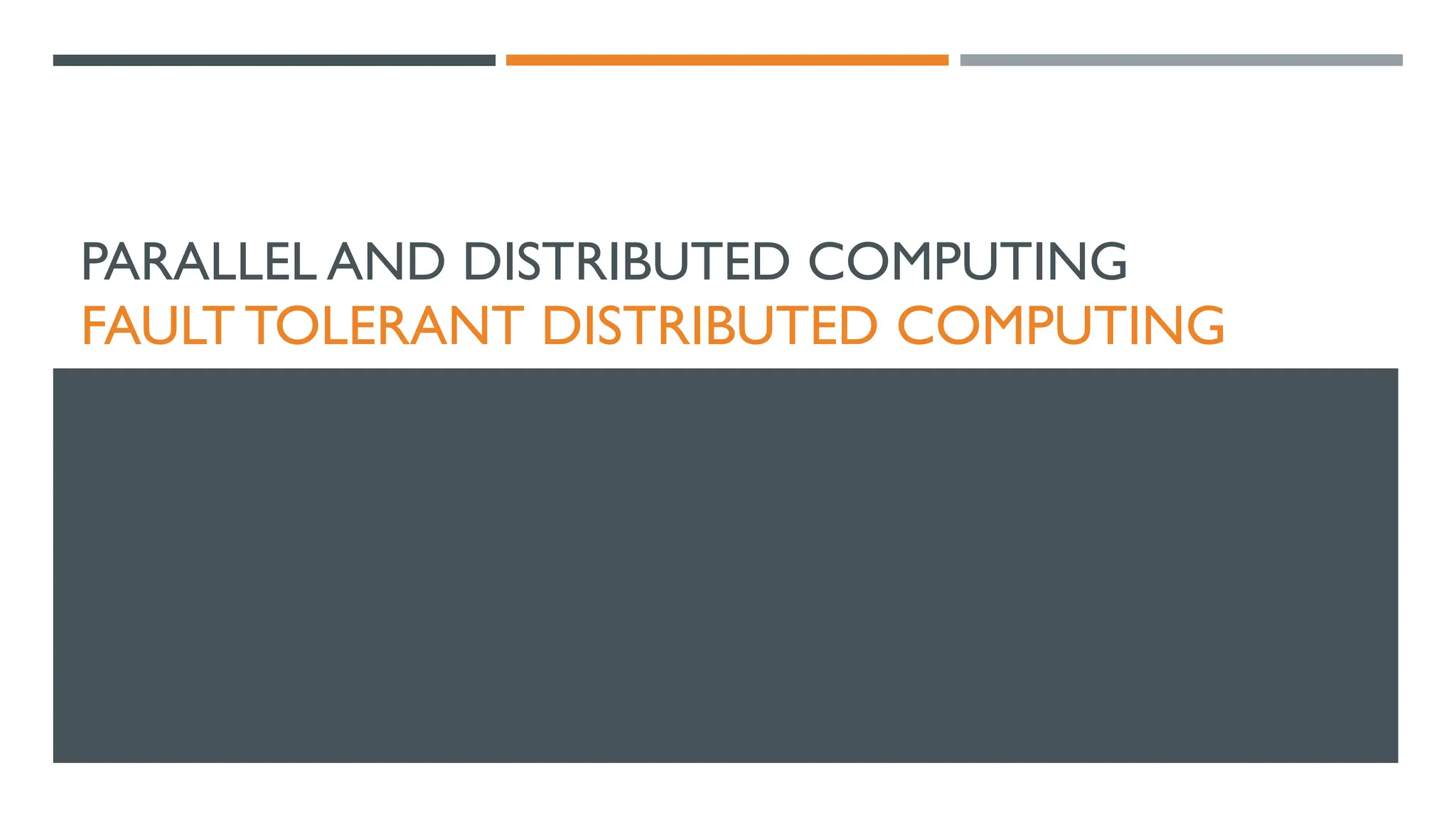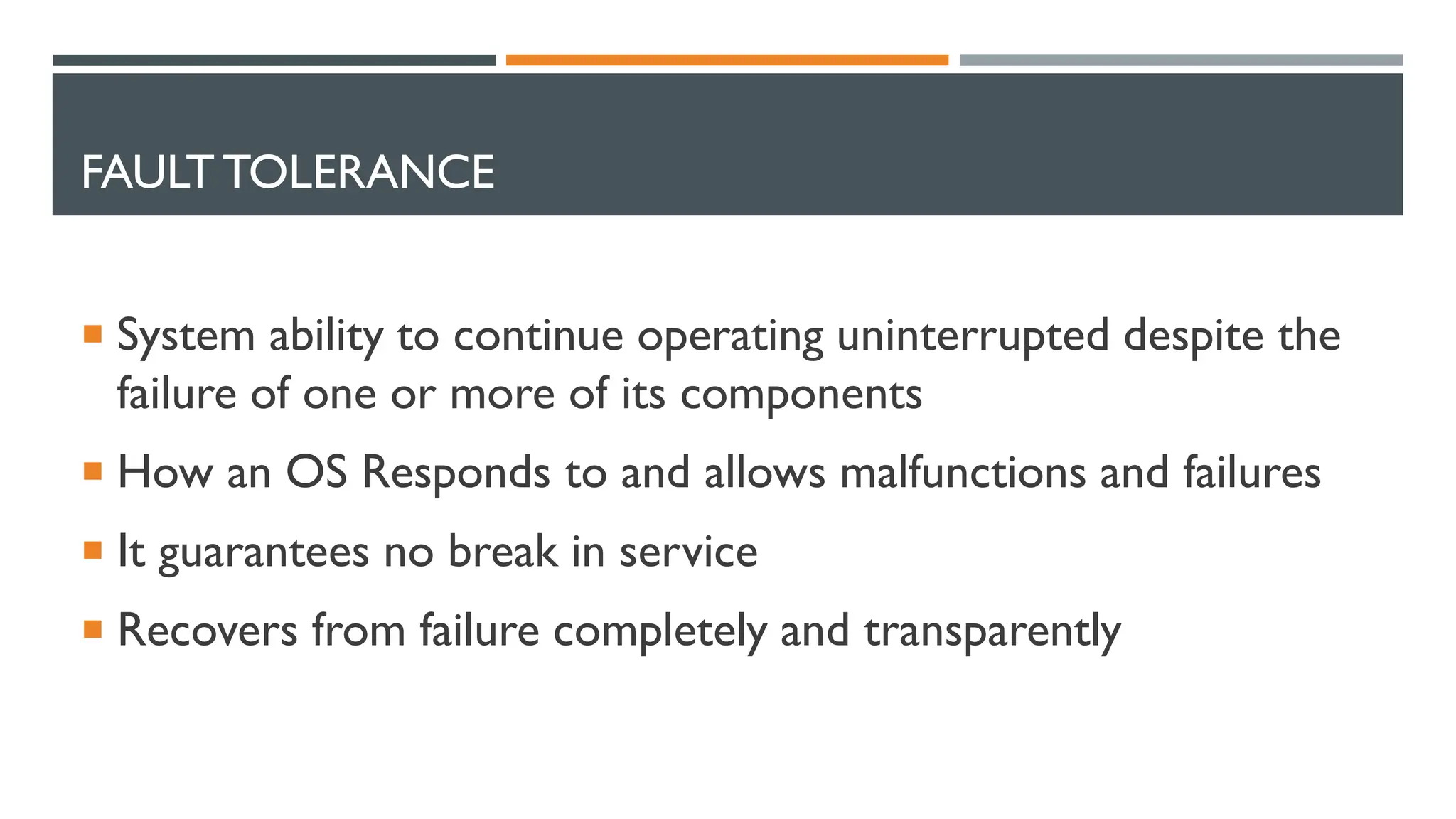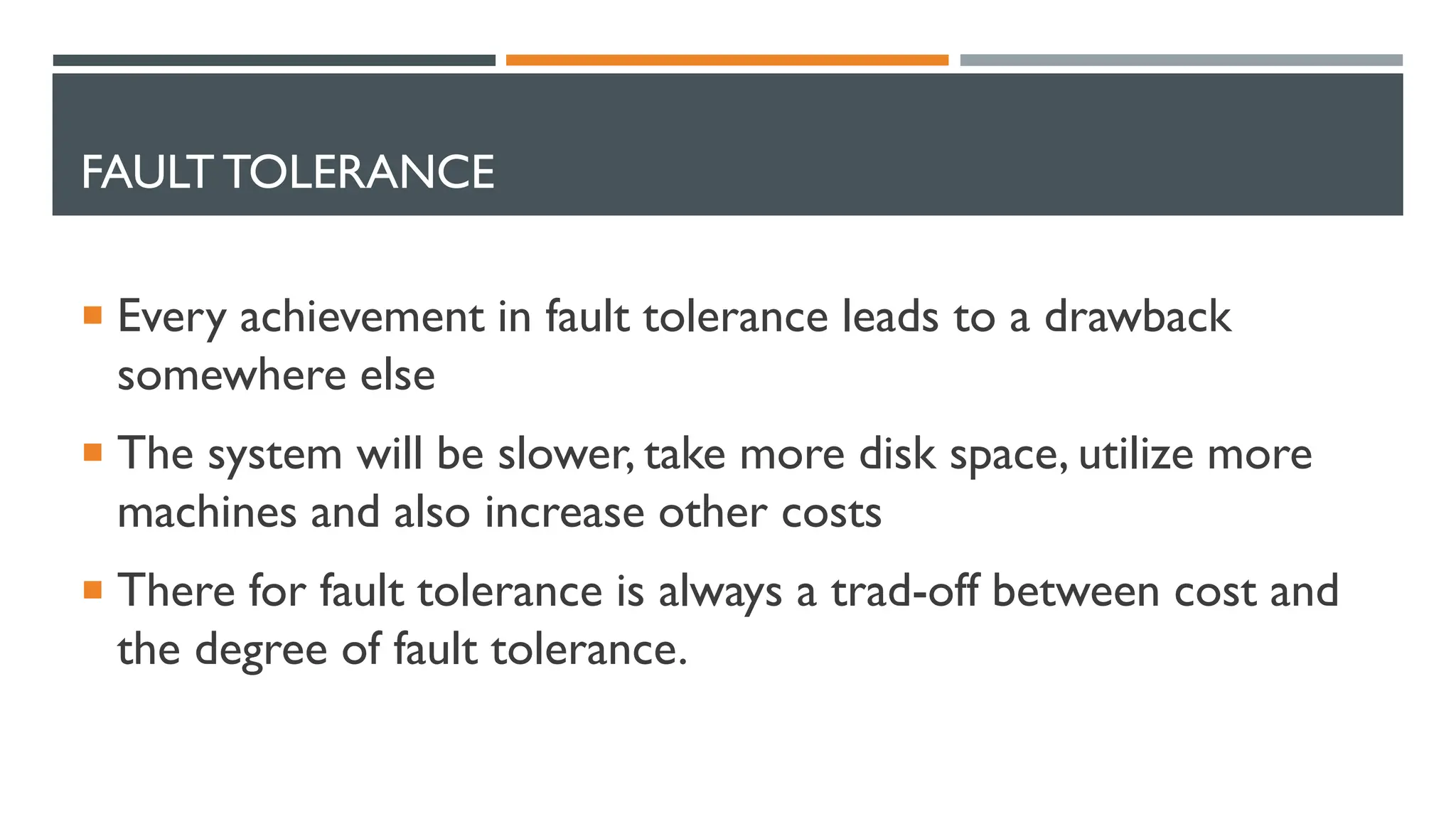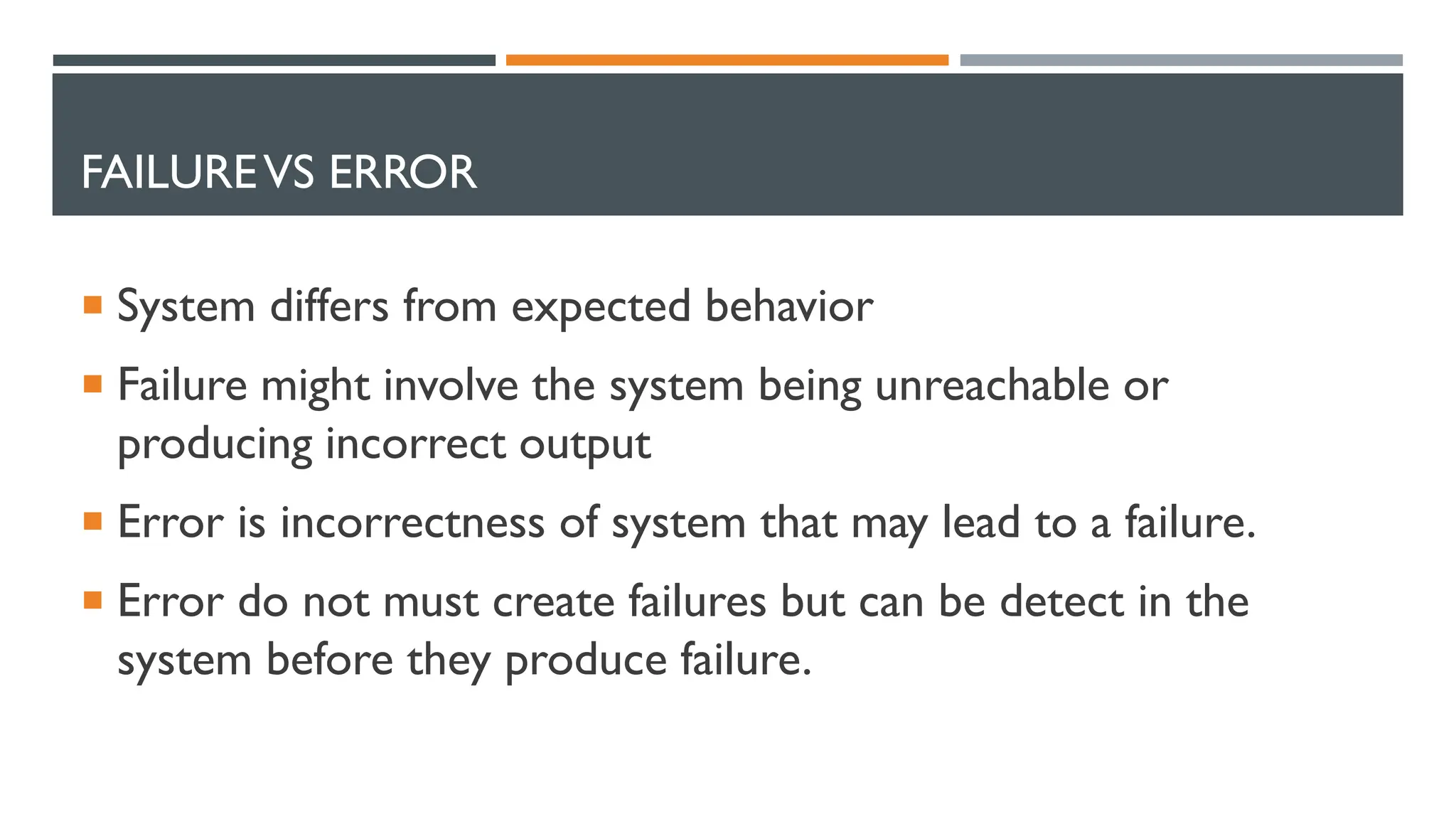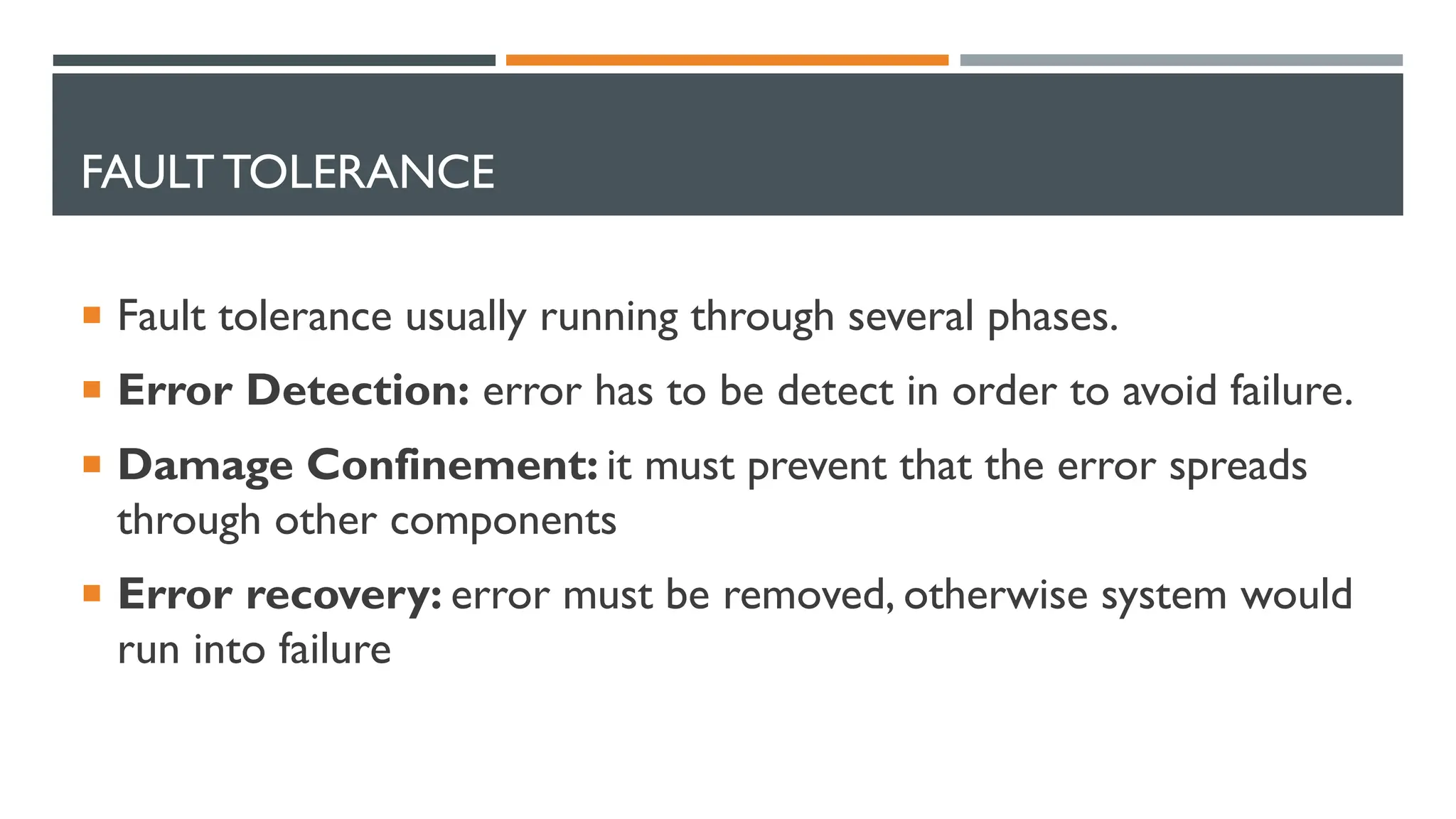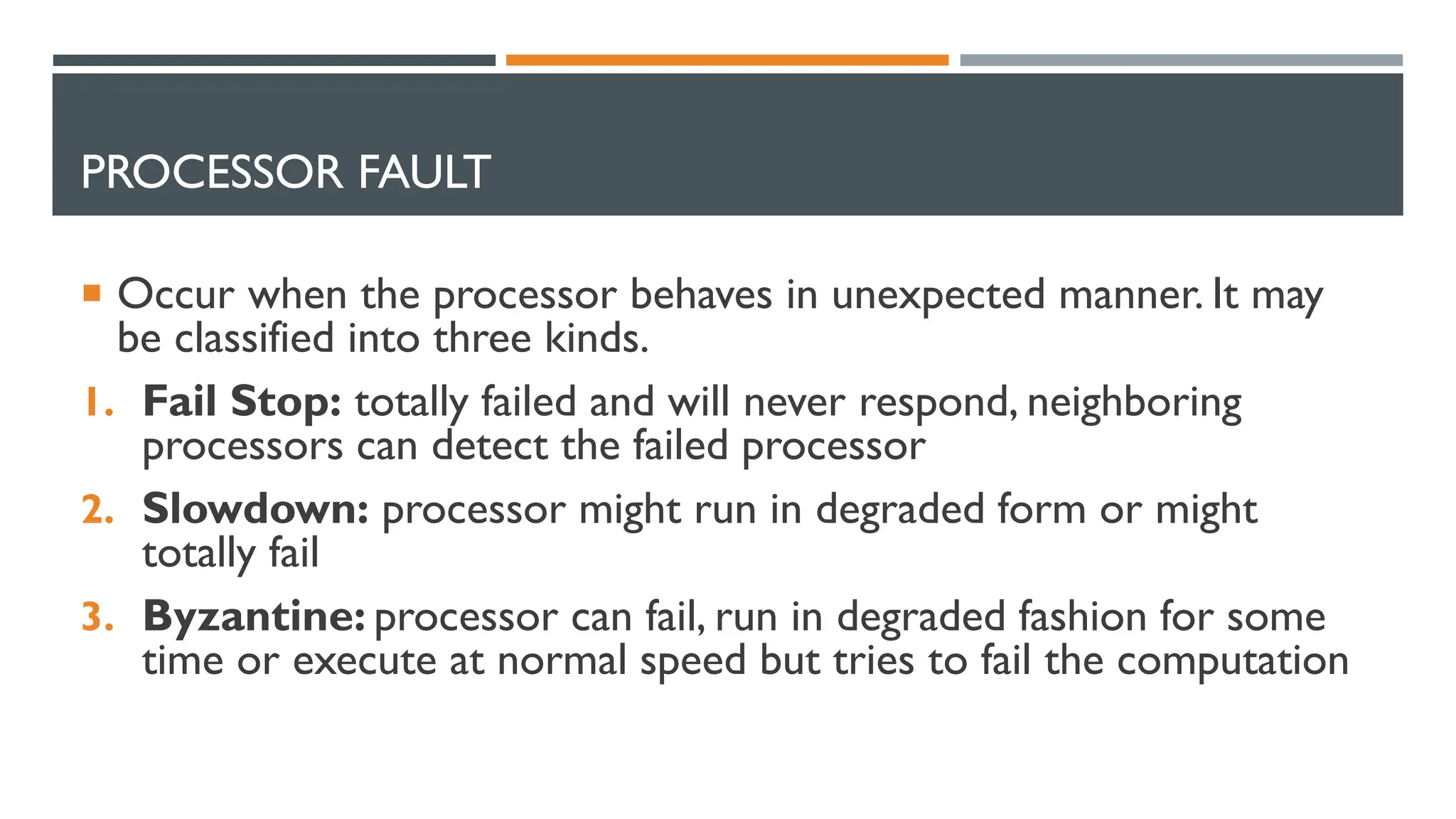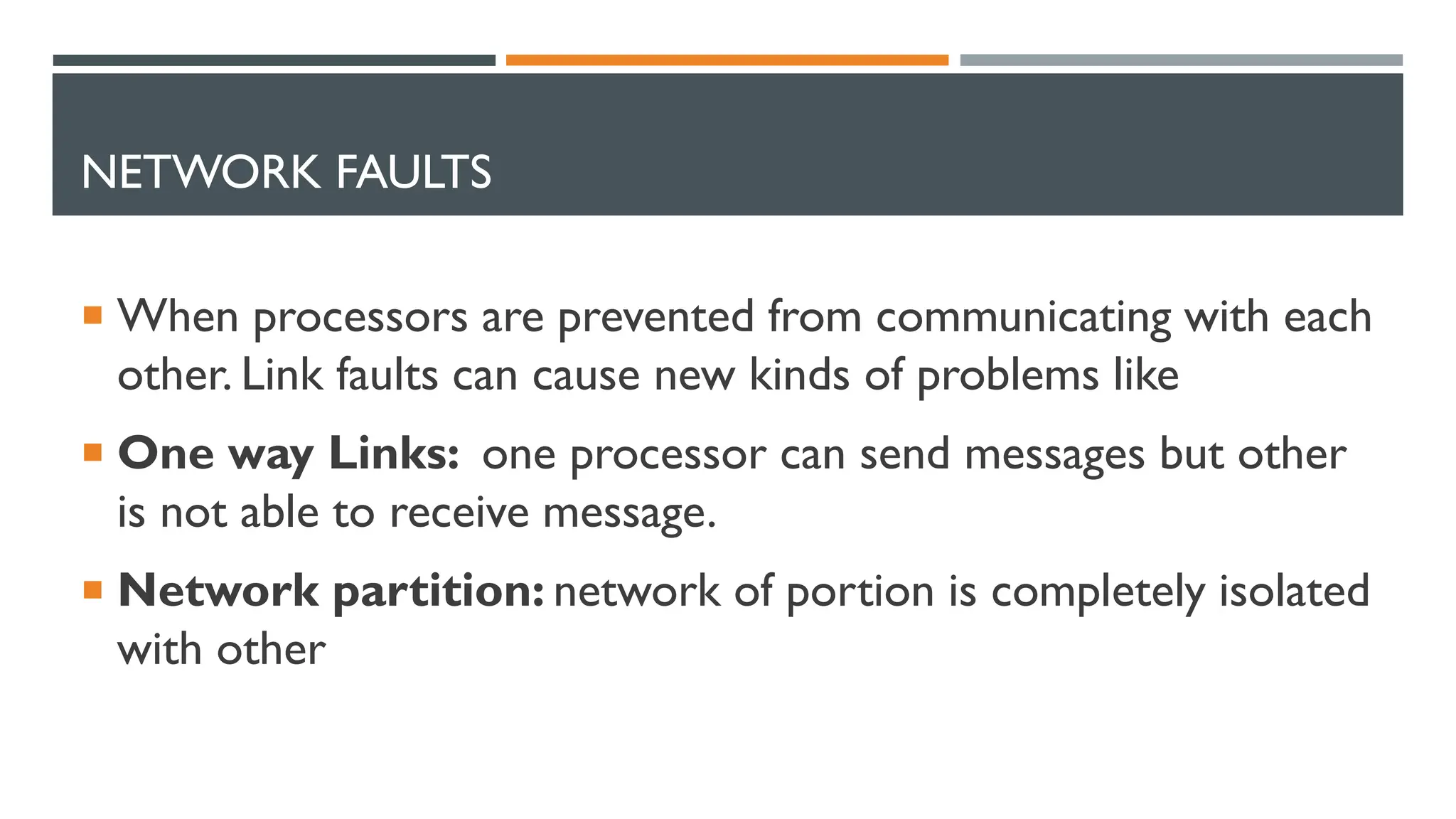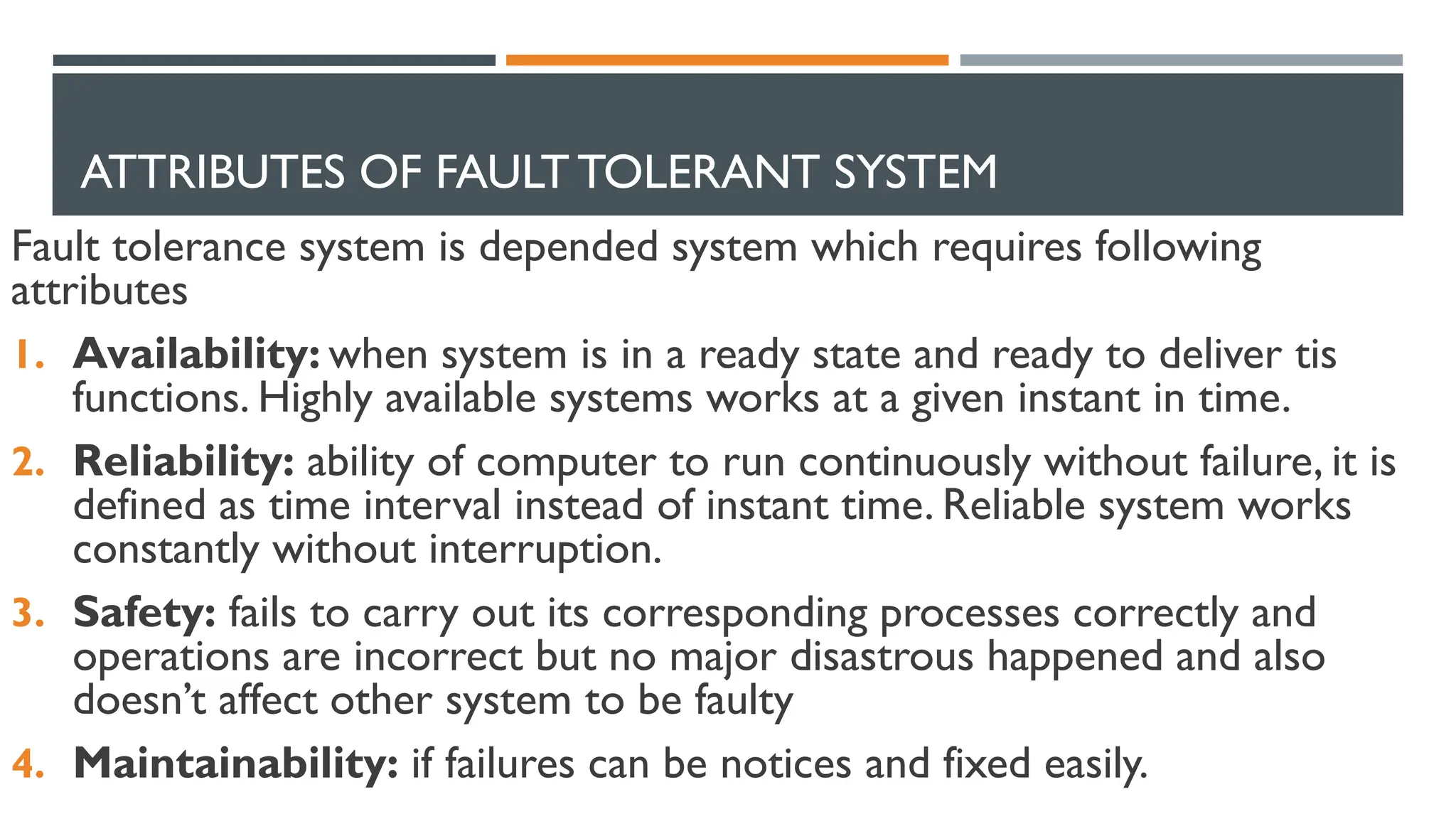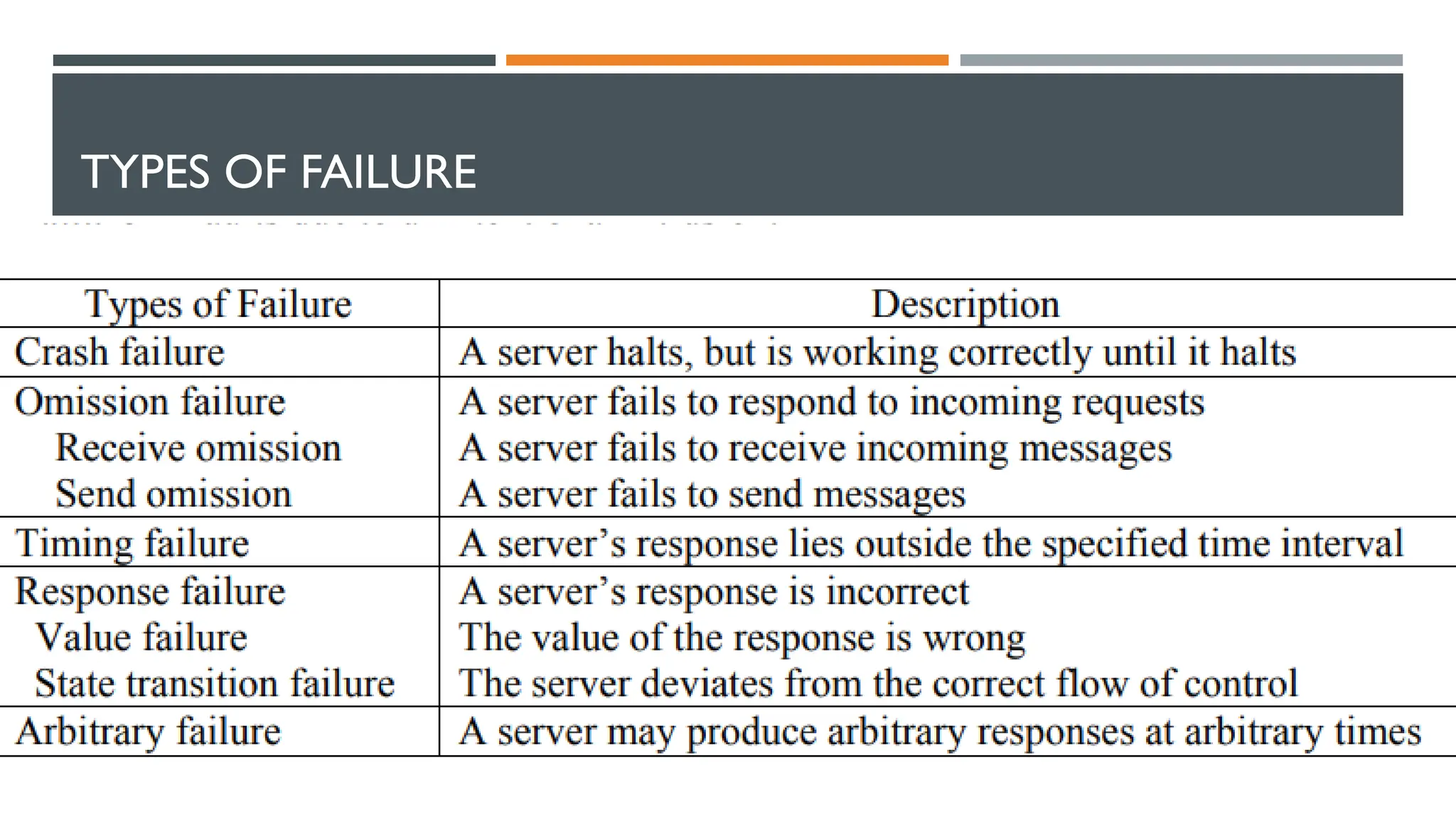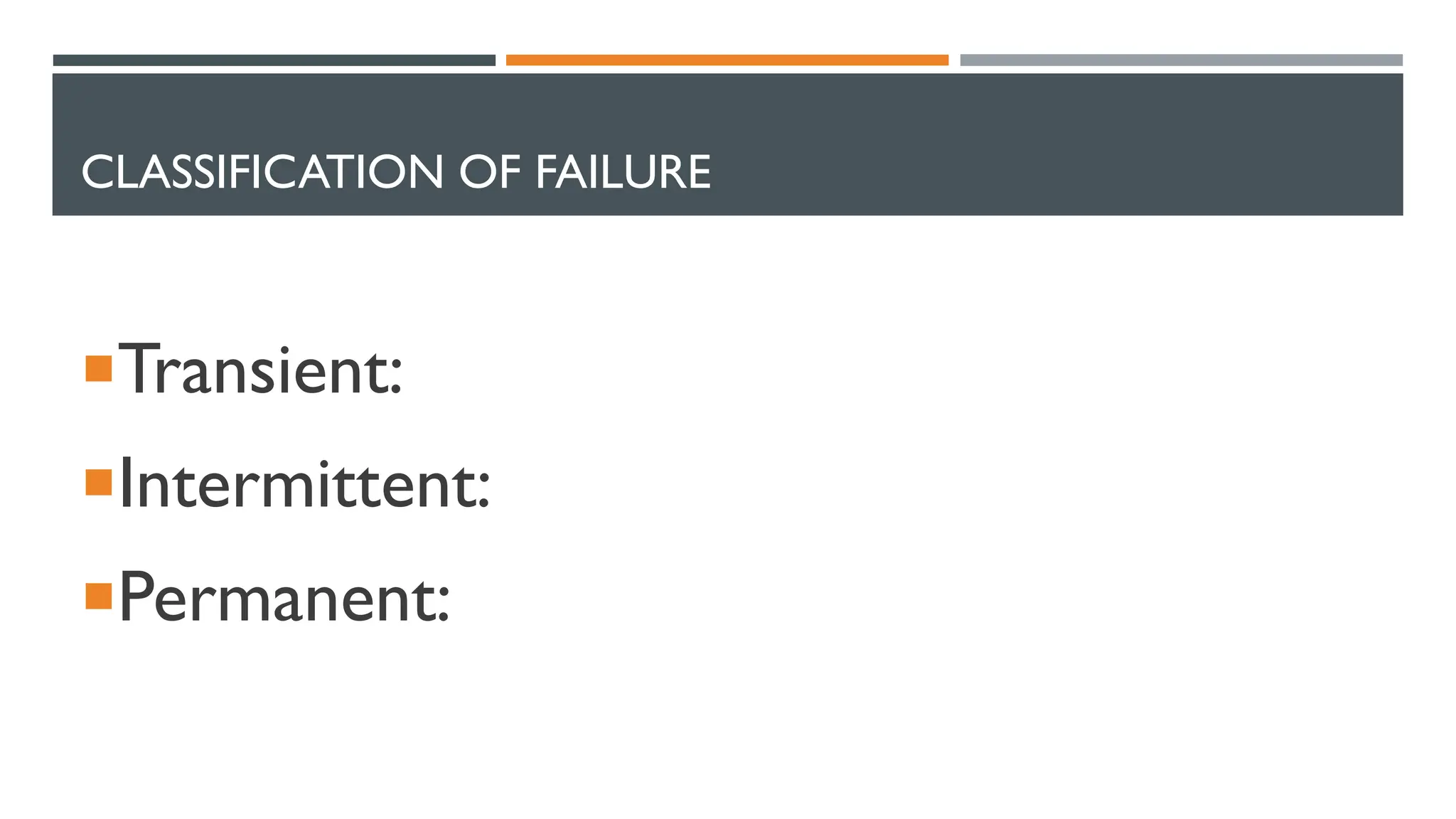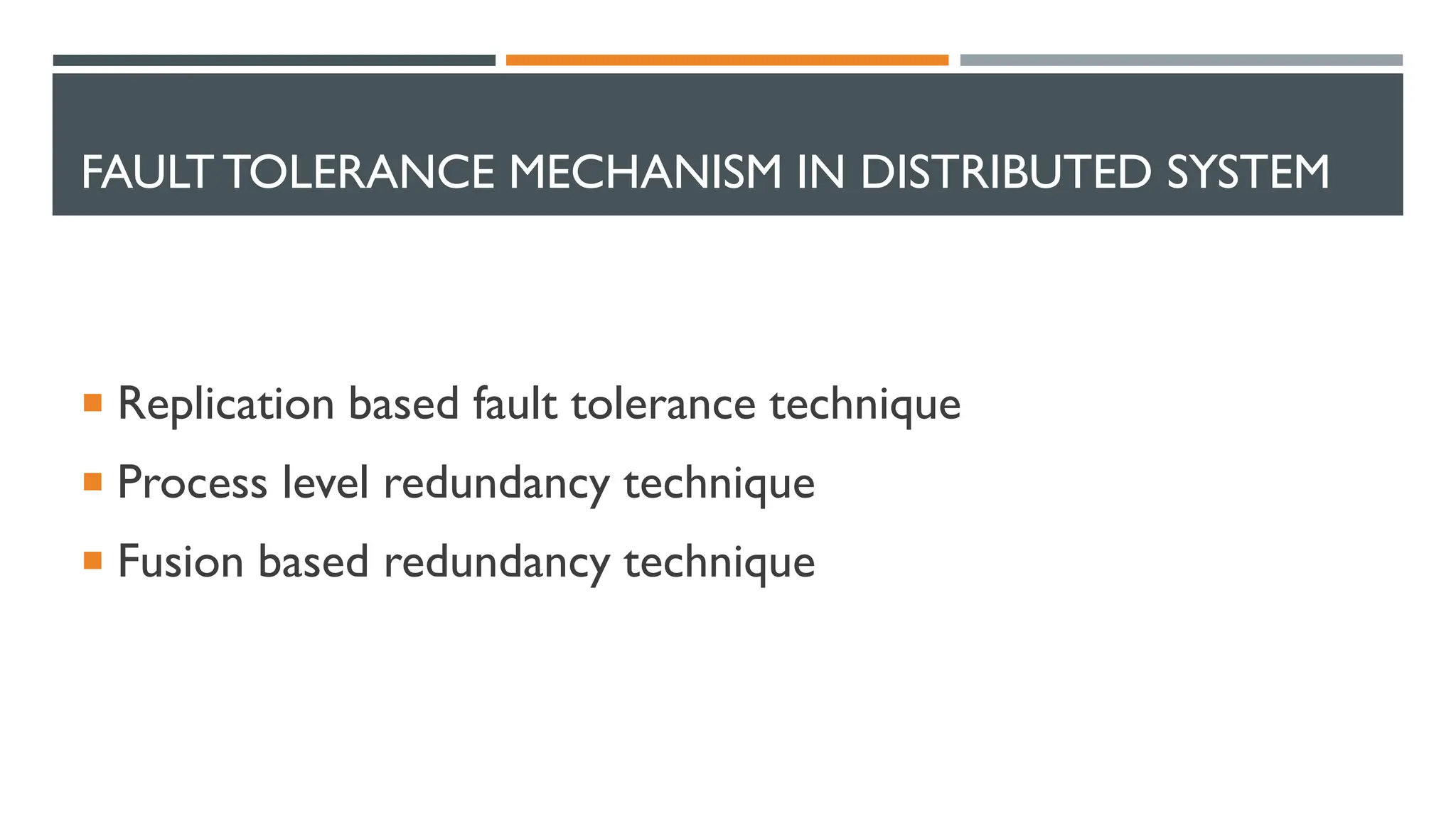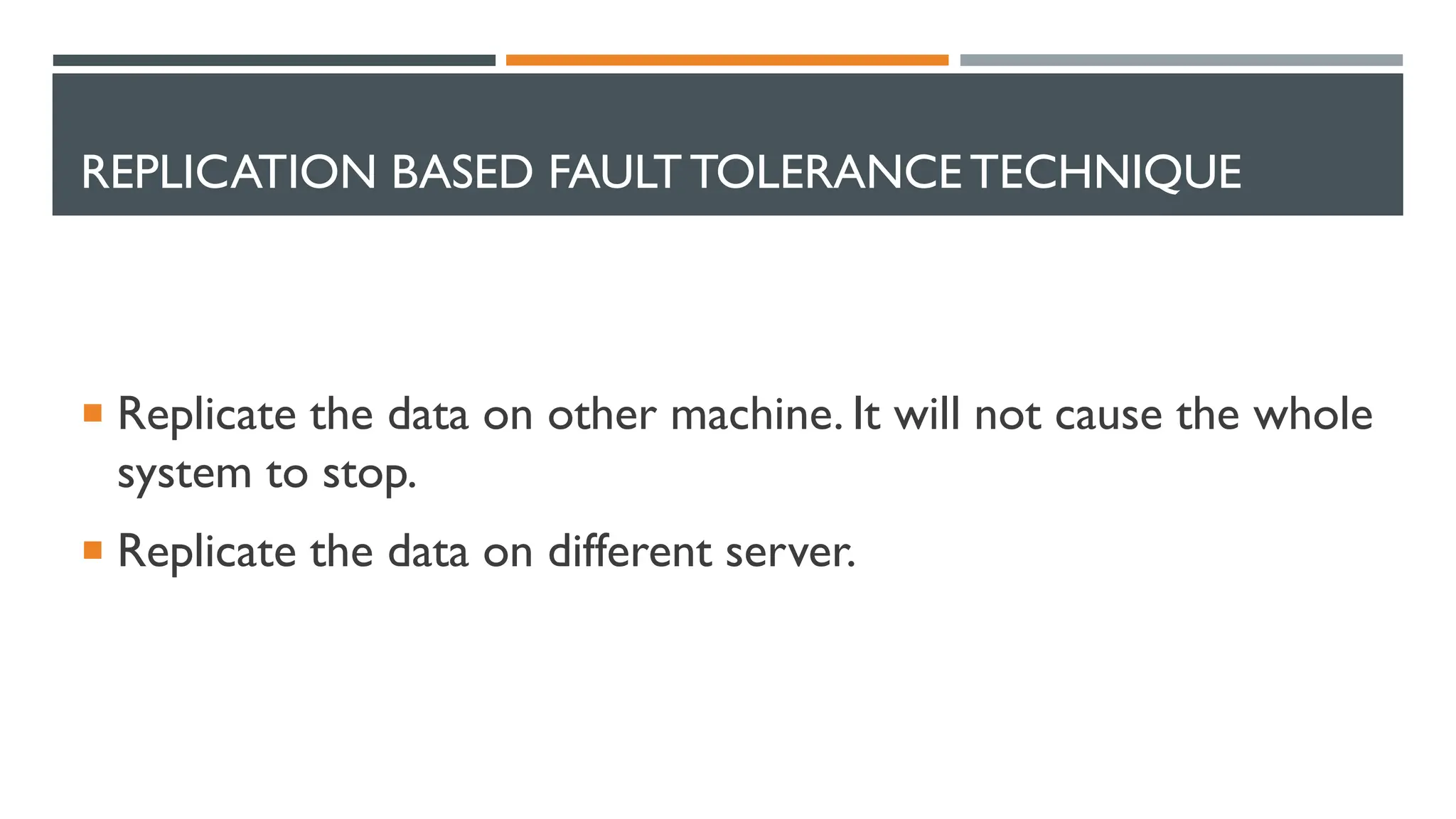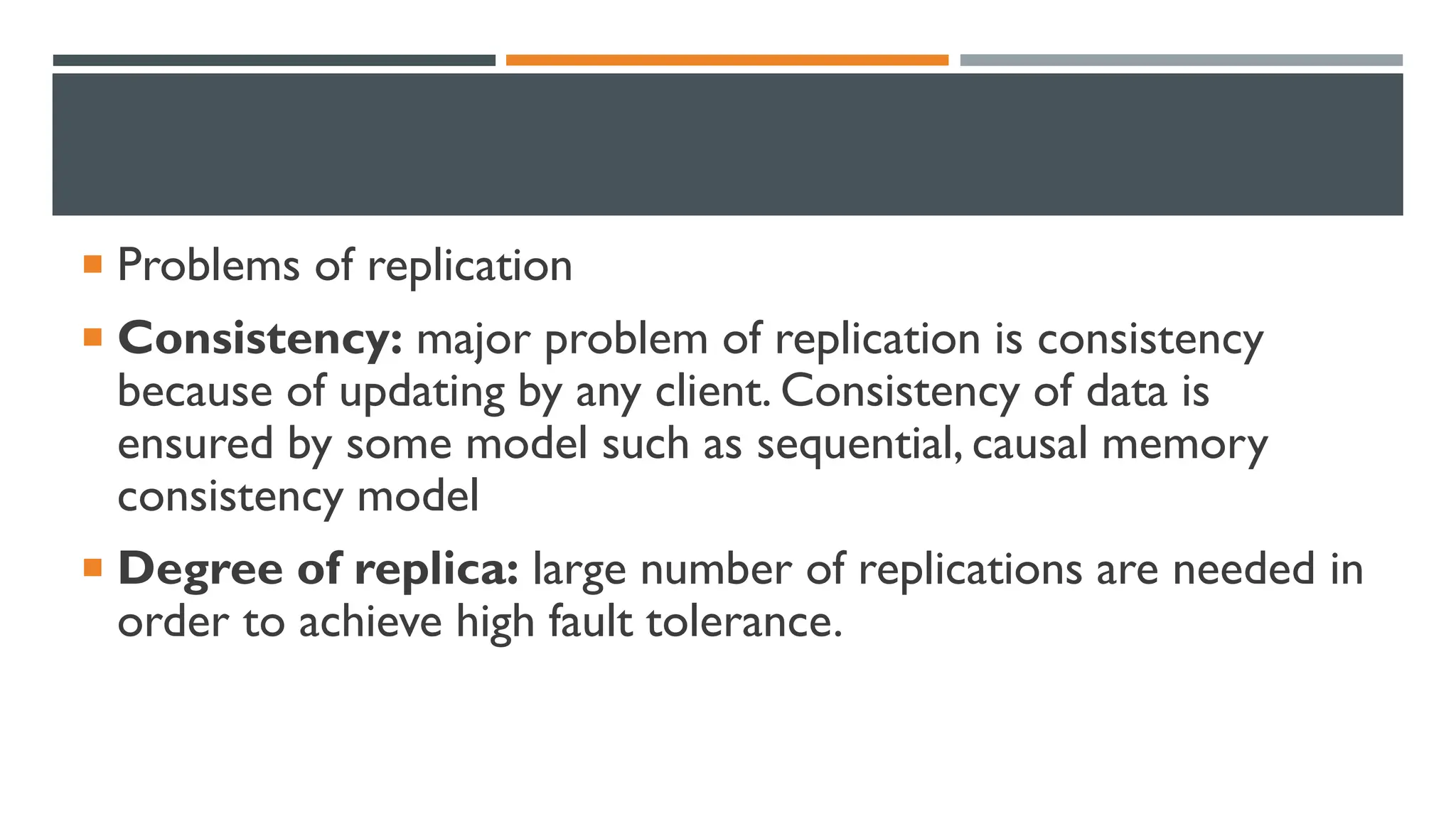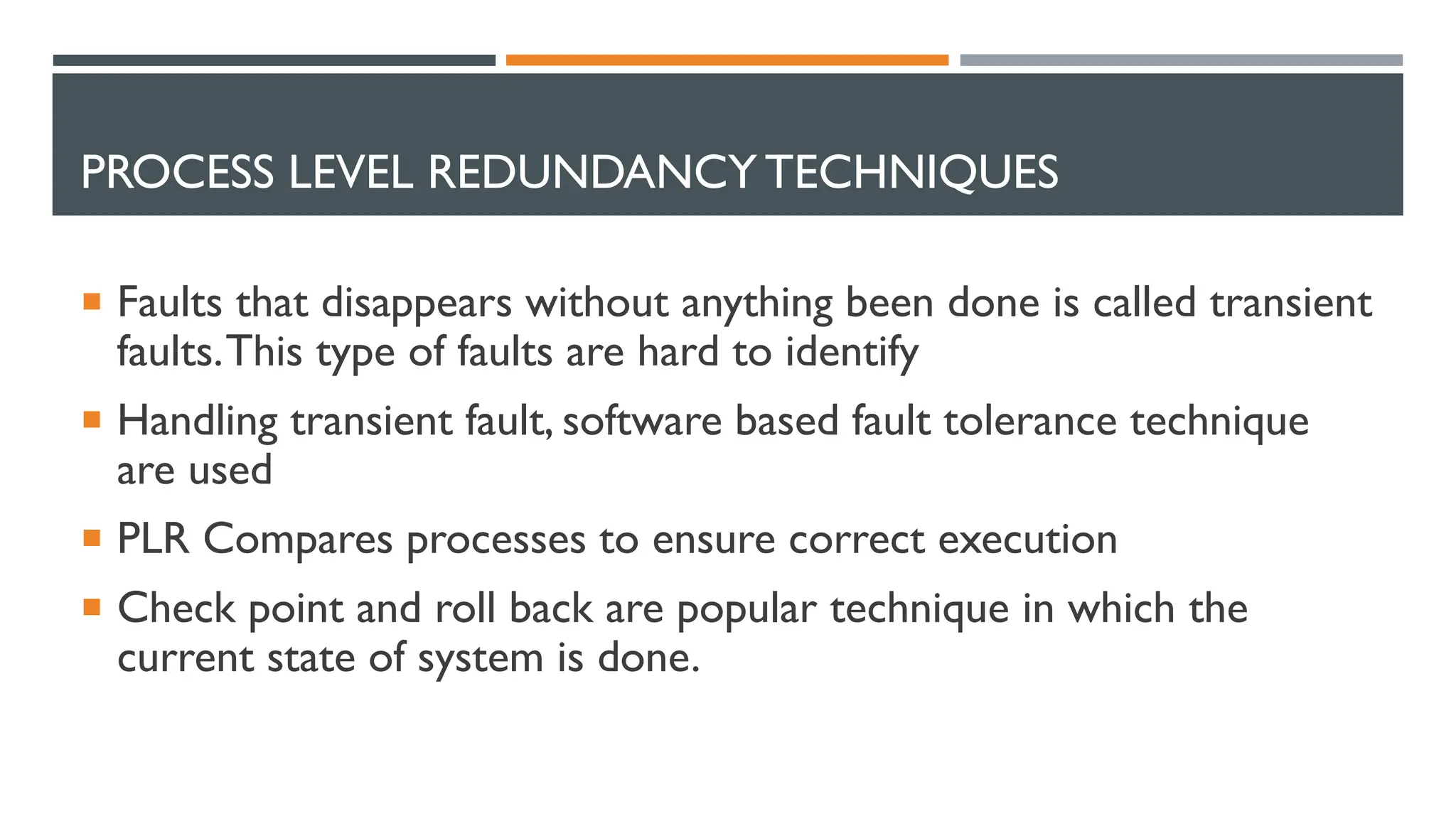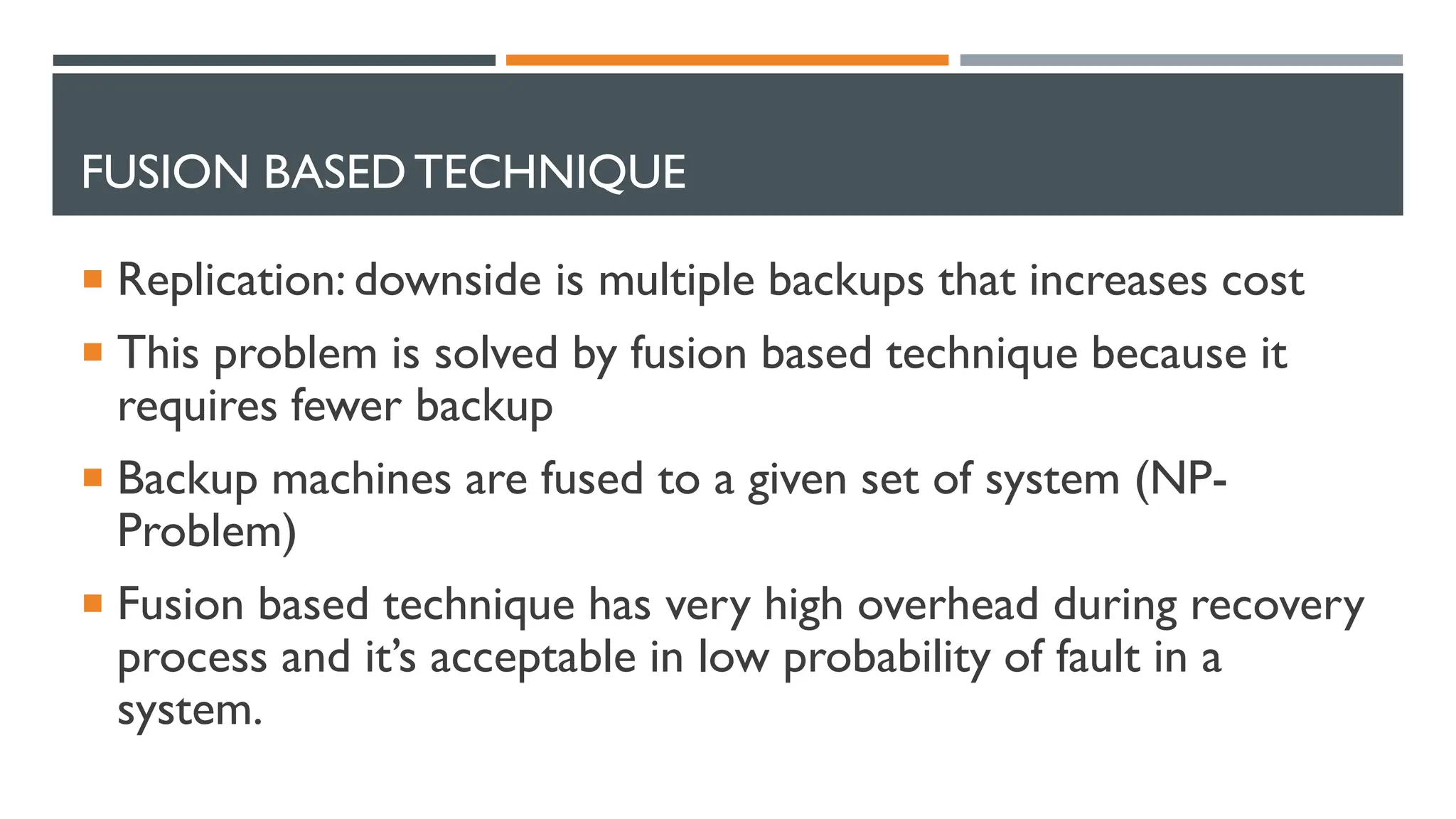This document discusses fault tolerance in distributed computing systems. It defines fault tolerance as a system's ability to continue operating despite failures. It describes different types of failures like processor faults and network faults. Fault tolerance techniques aim to detect errors, contain damage, and recover from failures. Common techniques include replication, where data is duplicated across servers, and process-level redundancy, which compares process outputs to detect errors. While fault tolerance improves availability, it typically reduces performance and increases costs.
